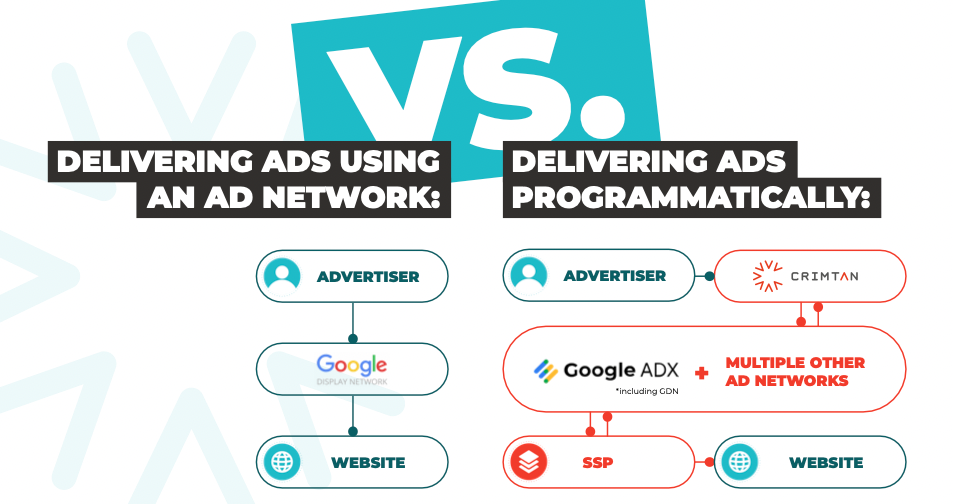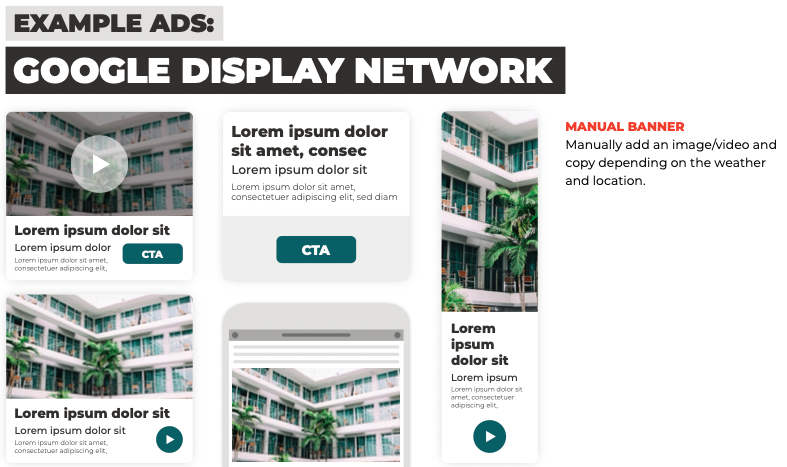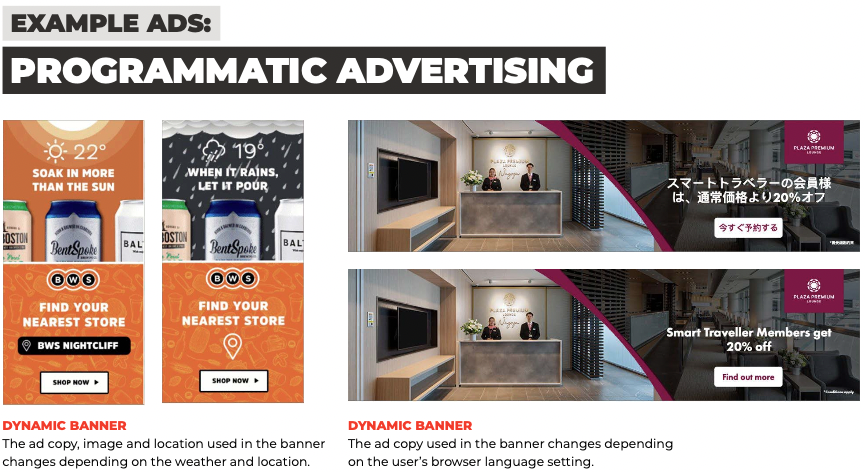If you’re unsure of the difference between Google Display Network and programmatic advertising, you’re not alone. It’s a common misconception that these two platforms are the same, but in fact they each have their own advantages and disadvantages. Understanding this distinction will help you make better decisions for your campaigns and ensure your digital ads are performing to their very best.
So here’s everything you need to know about Google Display Network (GDN) and programmatic advertising.
Let’s start with what Programmatic Advertising and GDN are
GDN is an ad network that any advertiser can use to display their ads on websites available through GDN.
Programmatic means advertisers can work with programmatic vendors that have access to different ad exchanges where they can help deliver their ads on several ad networks, including GDN.

Google Display Network provides access to all of the websites that have signed up to be a Google partner, which is an estimated 2 million sites. But when you leverage programmatic advertising, you are able to plug into multiple ad exchanges, extending your audience reach outside of GDN, including Index Exchange, Pubmatic, Xandr and more, with the opportunity to reach over 200 million active websites. In other words, if you want to have a wider reach, there’s no doubt that programmatic advertising is the way to go.
And what are the similarities?
Think of GDN as the entry level to programmatic advertising. They are similar in several aspects and they both work toward the shared goal of getting your message in front of a targeted audience.
- Concept: Both GDN and programmatic advertising are auction-based bidding platforms to reach a targeted audience.
- Placement: With both options, marketers are able to run both display and video formats.
- Targeting: Both platforms have shared basic targeting options. Users are able to target a specified audience based on demographics, behaviours, interests and site topics.
If you’re unsure about programmatic advertising, check out this 3 minute introductory video.
So what about the differences?
1) More ad formats available with programmatic advertising
GDN only has access to display and video (mainly YouTube) inventories. On the other hand, programmatic advertising offers you the ability to leverage other channels such as Connected TV (CTV), Audio, and Digital Out of Home (DOOH). And if you’re keen to run video advertisements, fear not; inventories outside of YouTube are still available through Teads, Unruly and SpotX.
2) More efficient targeting with programmatic advertising
Because GDN is part of Google, the audience targeting capability is limited to what Google has access to. However, programmatic advertising vendors tend to have their own audiences that they have built, or the ability to plug into a Data Management Platform (DMP) to find the right audience for your brand.
In addition, to ensure that your ads are served to real people and not bots, brands can implement brand safety on programmatic advertising campaigns. However, this is not possible with GDN. When brand safety is being applied, ad budget will be spent more efficiently as ads will only be shown to real people (see here for a detailed explanation)
Optimising a campaign on GDN is an automatic feature. While machine learning is on the rise, there are several instances where humans make better and faster decisions. Depending on the vendor, some vendors like Crimtan have dedicated traders looking after a set of campaigns to ensure that performance is maximised.
3) More creative ad banners with programmatic advertising
Dynamic Creative Optimisation (DCO) is the ability to tailor your creative and messaging in real time to optimise campaign performance. DCO is available on GDN only for retargeting purposes, where the dynamic elements are based on interests and page visits history. However, DCO is so much more than that. In the programmatic world, DCO allows brands to reach the right person at the right time at the right place, with the most relevant messaging. Apart from interest and page visits history, your ad copy and creative can also change based on location, day of week, time of day, language, currency, and more.
GDN offers only a standardised template, where you’ll have to manually add images, video or text. Whereas with a DCO ad, the ad changes dynamically without human input. These ads can shift depending on the weather, or showcase the nearest physical store to the customer as it pulls on the location of the ad.
Check out more examples of DCO here.


4) More holistic reporting with programmatic advertising
GDN provides basic information on campaign performance that brands can download directly from the dashboard. With programmatic advertising, different vendors have different reporting formats, but most will have a dedicated client services team providing you and your team insights, recommendations and action points that you can implement in your next campaign.
So, should I choose GDN or programmatic?
A great question. First and foremost, all of these points do not mean the GDN is a “bad” choice. Especially if your budget is limited, Google Display Network is an excellent alternative with a lower cost of entry. The learning gap is also smaller with using GDN and whichever option you choose; the most important thing is that you have a clear message, great content and a strong strategy behind all your advertising efforts.
But, without us sounding too biased, programmatic advertising is always the better option if your budget allows for it. It gives you increased control over your campaigns, a wider scale and better targeting capabilities.
If you would like to learn more, feel free to download our guide here.
Whatever industry you’re in, whether it’s travel, retail or finance, programmatic advertising can be beneficial for your brand. If you’re looking to improve your campaign performance and are open to testing the programmatic advertising landscape, feel free to reach out to Crimtan to learn more.